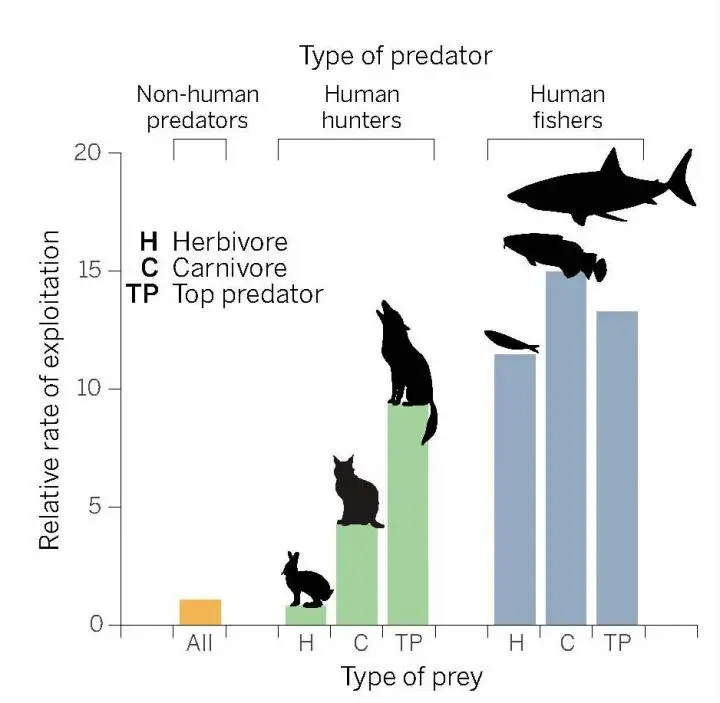Humans are just one of many predators in this world, but a new study highlights how their intense tendency to target and kill adult prey, as well as other carnivores, sets them distinctly apart from other predators.
As humans kill other species in their reproductive prime, there can be profound implications — including widespread extinction and restructuring of food webs and ecosystems–in both terrestrial and marine systems.
To evaluate the nature of human predation compared to nonhuman predation, Chris Darimont et al. conducted a survey of 2,125 species of predators around the world in marine and land environments. The results reveal that humans tend to prey on adults of other species at rates up to 14 times higher than other predators, with particularly intense exploitation of terrestrial carnivores and fishes.

Among fisheries, the authors found that the predation effect was even more pronounced in the Atlantic Ocean, which they suggest is a result of higher human densities and reduced fish biomass (from a longer period of regular and intensive fishing); the situation in the Atlantic reflects how the low abundance of economically valuable prey can drive aggressive exploitation.
All together, the unique predation behavior of humans can have significant impacts on ecosystems, altering observable traits like size, as well as life-history traits of other species, modifying the reproductive potential of populations, and transforming ecological interactions of food webs. A Perspective by Boris Worm takes a closer look at our tendency towards big catches, and its implications.
PRESS RELEASE – AMERICAN ASSOCIATION FOR THE ADVANCEMENT OF SCIENCE






